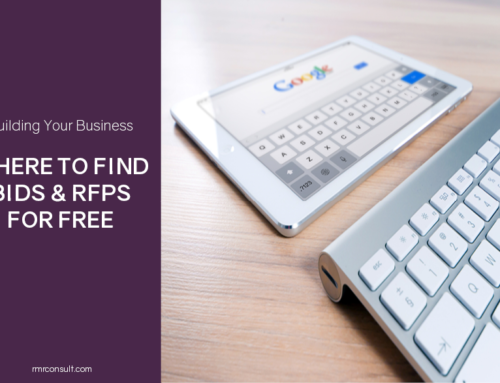How To Be A Great Marketing Partner
Partnering is a common practice in the industry; companies form joint ventures, establish mentor-protégé relationships, and often team up just because it makes sense (or it’s required, as would be the case in design/build projects). There’s usually a pretty clear idea of what everyone’s roles are during a project that involves partnering, but what about before you’ve landed the project? Usually, the prime firm’s marketing takes the lead, with support from the partnering firm, in proposal development. In theory, everyone knows the content they’re responsible for and submits it on time, but this isn’t always the case. Because we’ve all had a partnering nightmare at some point (if you haven’t, good on you and may the odds be ever in your favor) I’ve put together a few tips on how to be a great marketing partner.
First: Partnering Faux Pas
I won’t spend too much time here because these should be obvious, but let’s briefly talk about what not to do as a marketing partner:
- Don’t drop deadlines.
- Don’t be adversarial or try to control the process.
- Don’t assume that all of the responsibility is on the other party.
Okay, now that that’s out of the way, let’s talk about what you can do to be the best possible marketing partner.
Marketing Partner 101: Educate Yourself
As a marketing professional, the first sentence in your job description is probably ‘able to squeeze 25 hours of work into a 24 hour day’. The skills list on your resume probably starts with ‘comfortable with never-ending to-do lists’ and if you find a whole hour in your day for lunch it’s practically a vacation. Which is why we all (probably) do a little happy dance when we find out our partnering firm is putting together a proposal. That means all we have to do is put together some resumes and project sheets, fire them off, and move on to the next task. Right?
Wrong.
Please, please, don’t take this approach to partnering. You are still responsible for reading through the RFP and understanding all of the proposal requirements, not just the ones that apply to you. There are several reasons for this, including:
- You have to understand the project/RFP to tailor your materials (yes, you still have to tailor them for your partner!).
- You need to understand the requirements to support a quality kick-off meeting (you know how annoying it is when a PM or a Principal shows up to a kick-off unprepared, don’t be that person).
- You’ll need to be familiar with the requirements to give a quality review of the final proposal.
- Understanding all of the requirements will help you to be a more proactive partner.
We’re all human, which means your counterpart also has a never-ending task list. They might miss a requirement, or might be depending on you to support them with more than just project sheets and resumes. You need to be ready for any scenario, but outlining clear responsibilities for you and your partner in the beginning will help with this.
Marketing Partner 102: Communicate!
Connect with your partner and clarify expectations/roles as soon as possible. This could happen in the kick-off, or it might happen offline. Regardless of where or how, make sure it happens at the start of the process so that you all understand exactly what’s expected of you.
This is also a good time to discuss ‘gatekeeping’ or specific lines of communication. If it’s better for your partner to coordinate your firm’s resources through you, let them know. If it’s okay for them to go straight to your team for questions or content, make that clear as well.
Keep in mind that no two firms have the same marketing style. Resumes, for instance, range wildly in content and appearance. If you’re a supporting partner, make sure you ask what format your counterpart needs content in, or if they have a template for you to follow. If you’re the prime, make sure you ask your partner for exactly what you need. Basically, no matter which side you’re on, don’t leave space for guesswork.
Marketing Partner 103: Be Proactive
It’s better to err on the side of sending more information than it is to make your partner pry every single piece out of you, but be cognizant of their time (and ability to review additional materials). If you have content you think will be beneficial, maybe a brochure or a narrative from a similar project or proposal, send that over with a simple ‘this might help because ___’. If it does help, you’re a marketing superhero and will forever have the gratitude of your counterpart. If it doesn’t help, then you’ve still earned brownie points for trying to make their life easier. Just make sure you don’t bombard your partner with unnecessary information – keep the required content and the supplemental content separate, so it’s easy for them to get to what they need.
In Summary…
The key to being a great marketing partner is pretty simple. Just be the partner you would hope to have if your roles were reversed.
Time to share – in the comments below or in the LinkedIn Group – what has been your most memorable partnering experience?
Pssst. Don’t forget to package your InDesign files when you send them to your partner!





Leave A Comment